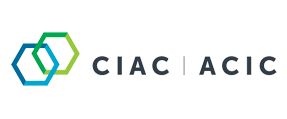Improving rail safety is a journey that never ends
April 17, 2023
Some of the dozens of measures introduced since the Lac Mégantic, Que., tragedy a decade ago include stringent tank car requirements, speed restrictions, key route risk assessments, stronger liability and compensation rules, and increased awareness.
There is no avoiding the fact that rail safety has been top of mind for Canadians recently. For Canada’s chemistry industry, rail safety is not just a priority, but part of our mission. As the country’s third-largest manufacturing sector, contributing over $64-billion to the GDP, and supporting hundreds of thousands of jobs, our industry is heavily reliant on rail transportation, with nearly 80 per cent of products shipped by rail. The movement of certain dangerous goods, such as water treatment chemicals and chemicals essential to mining, agriculture, forestry, and other key industries, is essential to our well-being and economy.
Working closely with rail carriers, government officials, regulators, and other partners, the chemistry industry takes on this responsibility with the utmost seriousness, and is committed to delivering effective rail safety initiatives. It operates under a set of environmental and safety principles known as Responsible Care®. This made-in-Canada chemistry sustainability initiative is practiced in 73 countries and by 96 of the 100 largest chemical producers in the world.
Our industry works hand in hand with the Railway Association of Canada, the federal minister of transport, and officials in Transport Canada to enhance the regulatory environment to mitigate incidents and prevent them from happening. Some of the dozens of measures introduced since the Lac Mégantic, Que., tragedy a decade ago include stringent tank car requirements, speed restrictions, key route risk assessments, stronger liability and compensation rules, and increased awareness. We have also put additional measures in place for operating safely in winter conditions and Emergency Response Assistance Plans have been expanded to include a broader range of products.
Another key initiative, jointly led by the Chemistry Industry Association of Canada and the Railway Association of Canada, is the Transportation Community Awareness and Emergency Response (TRANSCAER®) program. Using safety training tank cars, virtual reality training, and other tools, TRANSCAER members work with communities along Canada’s transportation corridors to raise awareness of the movement of dangerous goods and to build the capacities of first responders, ensuring they are equipped and capable of handling incidents.
Canada’s Class I railways have made significant investments to improve safety. Taken together, over the past decade, over $20-billion has been invested into the rail network to improve safety, resiliency, and network fluidity.
Continued improvements and a shared sense of responsibility are vital to ensuring the safety of Canadians and the protection of our environment, and the results of these efforts are clear. Canada’s railways are the safest in North America. In the past decade, freight railways have reduced their accident rate by 16 per cent, while the dangerous goods accident rate has decreased by 49 per cent. One incident is still too many, but over 99.99 per cent of dangerous goods carloads moved by train reach their destination without a release caused by an accident.
The scope, pace, and support of regulatory modernization and investment in rail infrastructure in this country has been unprecedented. But while we have made great strides, we know there is always more to be done.
Guided by the ethics and principles of Responsible Care, we are focused on continual improvement and remain steadfast in our shared commitment to rail safety and the safe transportation of dangerous goods to ensure that our economy, communities, and environment, from coast to coast, are protected.





